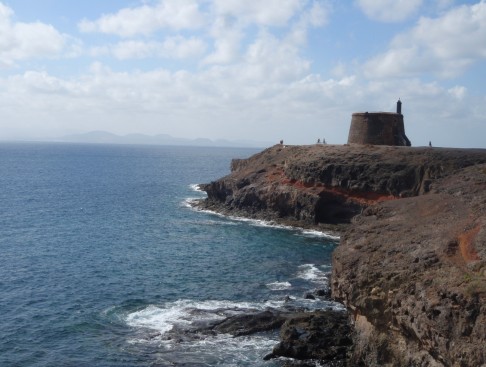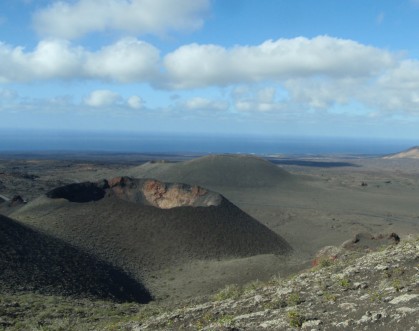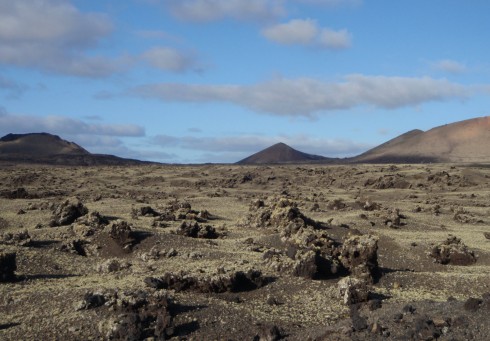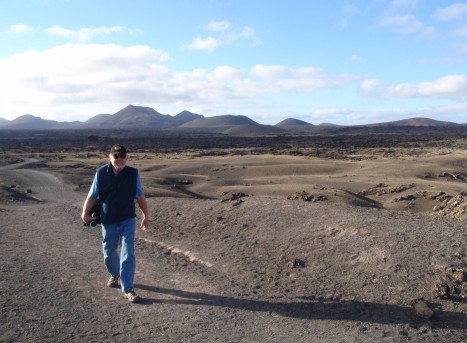LANZAROTE

Lanzarote’s rugged coastline
Lanzarote is the easternmost of the Canary Islands. It is only 78 miles from the African coast. It is approximately 35 miles from the north to south and 15 miles from east to west with a total land mass of 327 square miles. Although it has 132 miles of coastline, only ten miles are beach. The coastline is otherwise rocky. The interior of the island is mostly volcanic cones.
Lanzarote was probably the first of the Canary Islands to be settled – possibly since 1100 BC. It was named after a Portuguese explorer, Lanzarote da Framqua, whom arrived on the island in 1336. Shortly thereafter, the slave trade began in the islands and nearly decimated the population. The island also experienced a series of volcanic eruptions in the 1730s and drought in the 1760s, and much of the remaining population was forced to emigrate. However, the population has recovered, and today’s population is approximately 139,000. This population is 74% Spanish.
We had read that Marina Rubicon at the southeast tip of Lanzarote was a decent marina, so that is where we made landfall. When we arrived, we saw that the entrance faced a beach toward the northwest (not a direction from which swells should arise), and there was a massive breakwater surrounding the marina. We quickly recognized this as a safe harbor in which to leave Passage while we made a brief trip to Hawaii. We spent the next week getting Passage settled and secured, and we flew to Hawaii.
We returned to Lanzarote and Passage on Christmas Day. When we got to the boat, we were surprised to see the wear on our lines. Apparently there had been some significant weather blow through while we were gone, but Passage was fine.
Marina Rubicon

Volcanic crater in Timanfaya National Park
As usual following these lengthy flights (Hawaii-Seattle-New York-Madrid-Lanzarote), we both got sick. So it was after the first of the year before we got out and did much.
But before we got sick, we got to see our friends, Mike and Linda, on SV Integrity. We have been friends since we first met in Tonga eight years ago, and it is always a treat to cross wakes with them. We have swapped lots of e-mails, but we had not physically seen each other since Thailand. We carried a water pump back from the US for them, and we had a nice lunch and caught up. Then we got sick.
When we were again up and around, we explored the area surrounding the marina. There was a touristy but nice beach, Playa Blanca, just a short walk to the west. And there were a few interesting grocery stores to the east.
We rented a car one day and drove north to the gas plant with hopes of getting our propane cylinders filled. We also took along a few of our friends’. We completely struck out. They would not fill any of our cylinders, and we ended up buying a Spanish tank and regulator. The problem with the tank is that it would not fit in our propane locker, so we had to drill a hold in our cockpit coaming and run lines in to the cockpit where the tank would live so long as we used it. This is not an ideal situation, but we needed gas to cook.
Our friend, Ted Rhodes on Tandem, was also in the marina, and he had two crew with him – Bill and Manuela. We shopped together a few times, had a few dinners, and spent a day exploring Timanfaya National Park.

Stark landscape

Hiking lava fields
Timanfaya National Park is approximately 20 square miles on the southern end of Lanzarote. This is an area of stark volcanic landscape and contains Lanzarote’s only active volcano. The temperature at 43 feet below the surface ranges from 100 to 600 °C (212 to 1112°F). To demonstrate the heat, park rangers pour water in to surrounding holes, and a large geyser of steam shoots up well above the ground. There are also food barbecues fueled only by volcanic heat at ground level. A starkly beautiful landscape.
We also had to get Passage and ourselves ready for our Atlantic crossing of nearly 3,000 miles. We had brought boat parts and food items back with us from Hawaii, and we kept busy readying her and ourselves. We were ready by around January 10, but the weather was not conducive to leaving. We finally left on Wednesday, January 16.
Sail with us as we cross the Atlantic or jump ahead to the Caribbean.